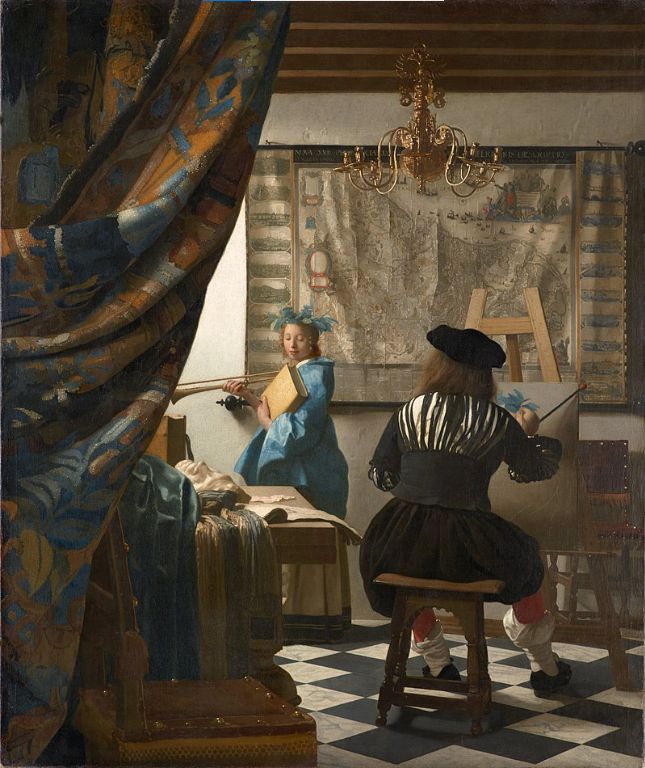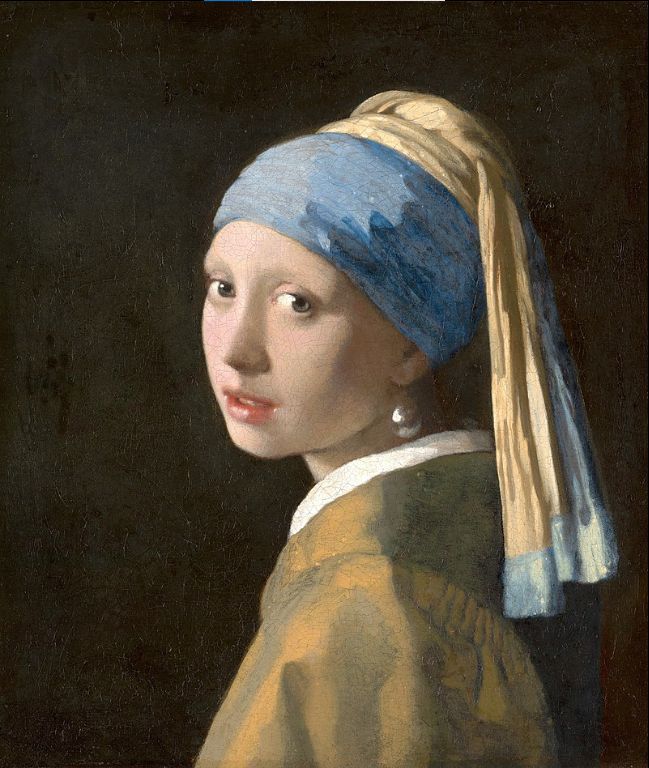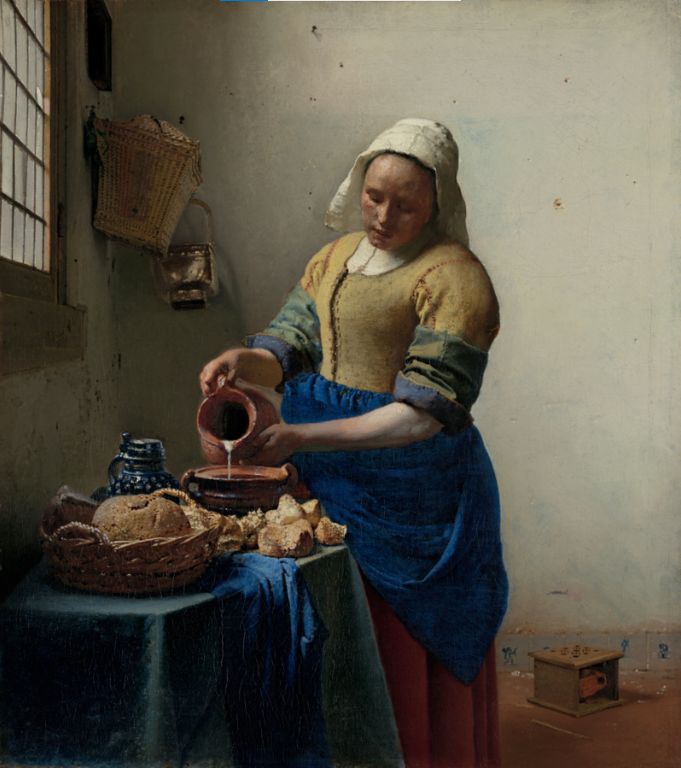Jan Vermeer (1632-1675) was a painter of the Dutch Golden Age, renowned for his exquisite genre scenes and unique use of light. Despite his limited output, with fewer than 35 surviving works attributed to him, Vermeer’s art demonstrates extraordinary skill in depicting light and color, alongside a profound observation of everyday life.
Vermeer differed from his contemporaries in his extreme sensitivity to light and his distinctive use of color, particularly the combination of blue and yellow. This unique luminosity in his work was achieved through his exploration of optical experiments and keen observation. His method of capturing the brightness of colors was also distinctive, using tiny, pearl-like highlights to outline objects. This even distribution of focus throughout his works gives them a calm, objective quality, reminiscent of glass plate photography, resolving all conflicting elements into harmony.
Vermeer’s works are often mistaken for mere depictions of everyday life; however, they frequently contain deeper meanings. For instance, his masterpiece The Art of Painting (De Schilderconst) was originally thought to portray the artist himself at work in his studio. It was later discovered that the artist's wife referred to this painting as The Art of Painting. In this work, the artist wears 16th-century Burgundian attire, while the model poses as Clio, the muse of history. The lavish curtain evokes the drapery used in official portraits, and the wall features a recently printed map of the Netherlands, a common household decoration at the time and a recurring element in Vermeer’s paintings.

Vermeer’s artworks are not only visually captivating but also rich in thematic and compositional complexity. For example, Girl with a Pearl Earring is world-famous for its soft lighting and enigmatic expression. The girl, slightly turned, gazes directly at the viewer with a hint of a smile, as if she is sharing a secret. Vermeer’s ability to capture fleeting emotions and the play of light and shadow makes his works stand out in art history.

Although Vermeer’s life was short, his artistic achievements had a lasting impact. His name was almost entirely forgotten in Dutch art history influenced by the academy until he was rediscovered in the mid-19th century. Today, his paintings are considered masterpieces of the Dutch Golden Age, with his unique handling of light and color profoundly influencing subsequent artists.
During his lifetime, Vermeer did not gain widespread recognition and supported his large family through running an inn and dealing in art. His career was marked by hardships, but his passion and dedication to art allowed him to create a series of classic works, securing his place in art history.

Vermeer’s achievements in his short life are deeply influential. His works, characterized by unique light effects, delicate color palettes, and profound emotional expression, represent the pinnacle of Dutch Golden Age painting and continue to inspire artists. Whether through his masterful use of light or his insightful portrayal of everyday life, Vermeer’s art deserves careful appreciation and study. His paintings reveal the beauty and tranquility of daily life, conveying a profound sense of emotion and understanding of existence through the interplay of light and color. Vermeer’s art is not only a visual delight but also a profound spiritual experience, offering viewers a sense of peace and serenity.